This document describes how to rebuild the 1966 - 1970 AMC Wagner power front disk/rear drum brake pressure differential valve by replacing the internal parts that typically wear out after years of service. Tools needed:
|
|
The valve rebuild kit and switch rebuild kit provided by Muscle Car Research LLC includes the following parts:
- O-rings
- Piston springs
- Switch plunger
- Switch plunger actuating spring
- Copper crush washers
Arrange your valve, tools, and rebuild kit on a clean work surface. Let's get started! The first step is to inspect the valve and make sure that the exterior is undamaged. Check the brake lines and port threads for damage. Make sure the valve is securely attached to the mounting bracket. The plugs on the ends of the valve are often rusty and pitted, but they can typically be reused if you don't have better ones. A loose mounting bracket can be tightened up by lightly tapping the brass mounting tab with a ball peen hammer. If any of the brass port threads are stripped or damaged you're better off finding another valve. If your valve passes the exterior inspection you're ready to disassemble it and inspect the internal parts.
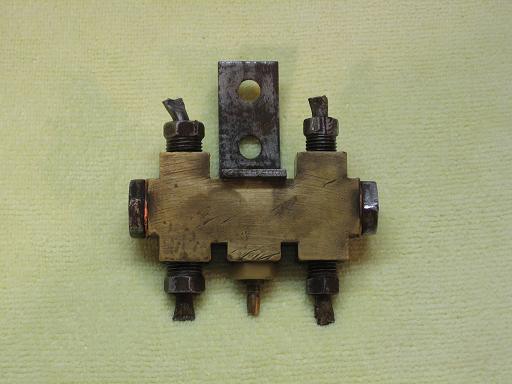
Disassemble valve:
Use the wrenches or sockets to remove the end plugs and wire terminal. Remove the springs and spring caps. Push out the pistons using the center punch. If the pistons don't come out easily it may help to soak the valve overnight with penetrating oil. Here's what you'll see (hopefully yours isn't quite so dirty):
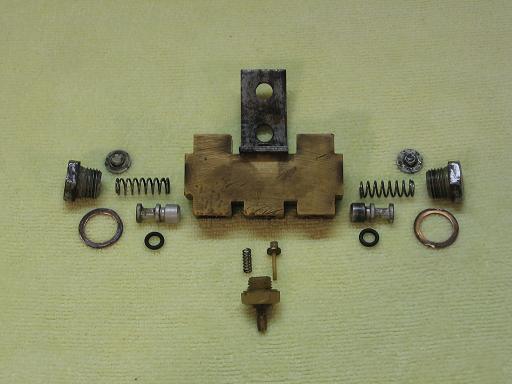
Inspect the bore once the pistons have been removed. If the bore isn't perfectly smooth you should either replace the body or have the bore professionally sleeved. Note that the pistons are backwards (the thick end should be towards the outside; sorry, my mistake when I laid out the parts) in the picture!
Remove old rings:
Remove the old rings from the piston. A dental pick makes it easy to get under them.
Clean parts:
Soak the brass parts, including the body of the valve itself, for a few hours in a container of liquid ammonia. Ammonia does a great job of removing tarnish from brass, but be careful of the smell! Remove the parts, flush with water, and polish with steel wool. Clean the bore of the valve with the bore brush and make sure that the bore is perfectly clean - any dirty residue that lingers in here can cause a leak! Finish cleaning the brass parts using alcohol and cotton swabs.
Reassemble valve:
Align the parts as shown in the picture below.
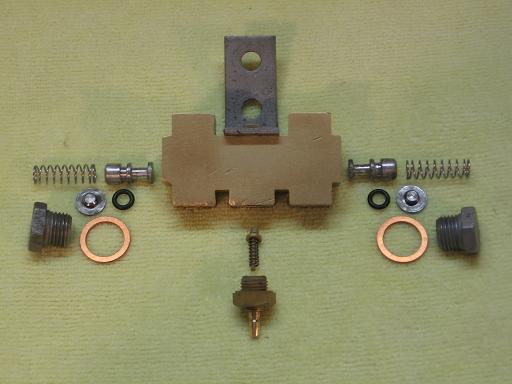
I find it easier to install one spring assembly before working with the pistons. Start by inserting a spring cap in one end of the valve. Be sure to leave the "bump" facing out.
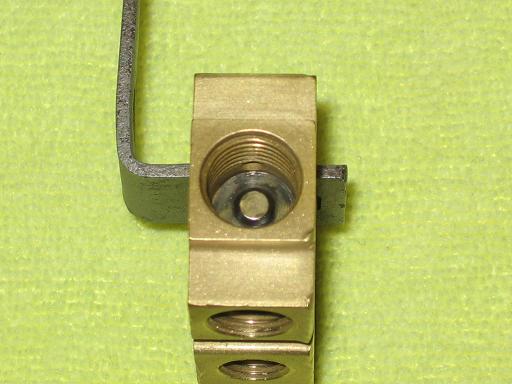
Now install the spring and plug along with a new copper washer. Tighten the plug only enough to form a positive seal with the copper crush washer

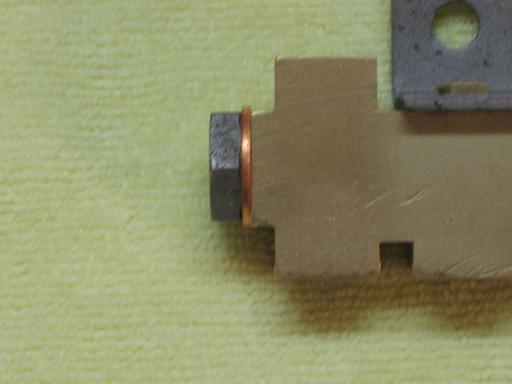
Install the new seals from the kit to replace the rings as shown in the picture below. Dip each seal in clean brake fluid to lubricate it prior to installation. Be careful to not twist the seals when installing them. It helps to use the dental pick to hook the rings and pull them over the side of the pistons. Note the correct piston orientation!
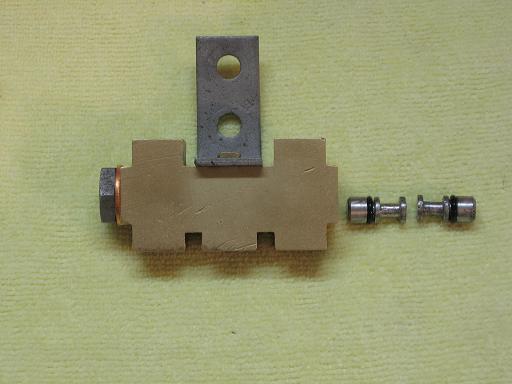
Lubricate the piston with brake fluid and insert it into the valve until it makes contact with the installed spring cap. The piston should move with moderate pressure. Remove the piston and check for a twisted seal if it seems too tight. Install the second piston the same way. When both pistons are installed properly you should be able to see the meeting of the two thin ends through the terminal plunger hole. Install the spring and plug assembly as described above and tighten the plug only enough to form a positive seal with the copper crush washer.
Now turn your attention to the wire terminal.
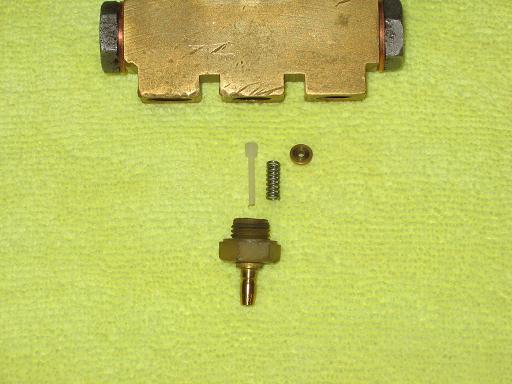
Insert the nylon plunger, actuating spring, and brass switch contact (curved side facing towards the valve body!) as an assembly into the threaded switch. Note the orientation of the parts! Thread the switch into the valve and make sure that the large end of the plunger fits into the hole in the valve body. If installed properly it will ride on the two thin ends of the installed pistons.
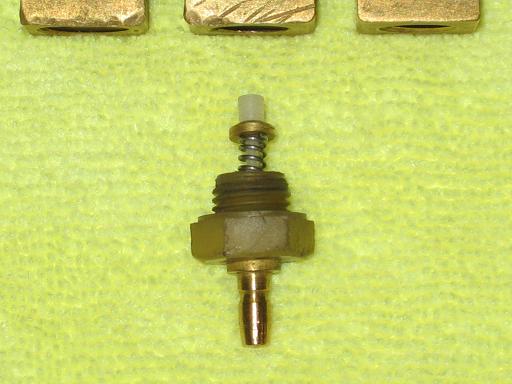
That's it! Your finished valve should look like the one pictured below.
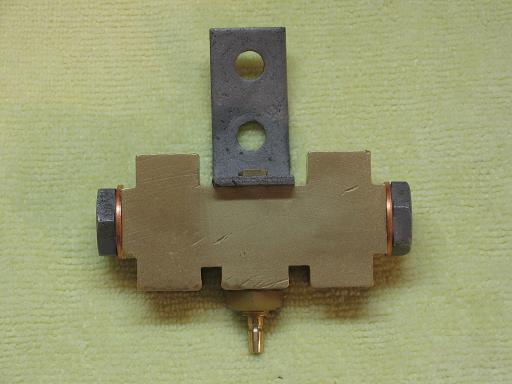
Now you can reinstall the valve in the car (mount it with the wire terminal facing up) and reconnect the brake lines to the valve. Start each line by hand as best you can to ensure that the fittings are threading in straight and smooth. Be careful - it's easy to cross-thread the fittings and damage the soft brass threads. Tighten each fitting with a flare nut wrench. You may need to tighten, loosen, and retighten each fitting multiple times to obtain a leak-free seal. Add brake fluid, bleed the brakes, and check for leaks.
- Log in to post comments
